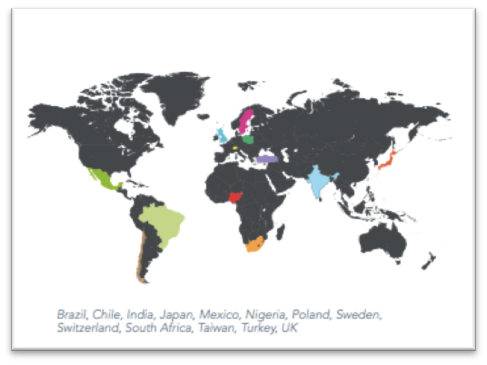The Digital Age is Real-Time, So Why Not Payments Too?

In the era of the digital age, everything happens instantly. Emails, texts, tweets and posts are flying back and forth and immediate access is the new expectation. Now customers want to see speed in their payments as well and be able to make high-speed payments anytime, anywhere. The UK leads the charge for real-time payments, which is now spreading across the globe.
With a 24/7/365 lifestyle and increasing dependence on mobile, it is imperative that the infrastructure is able to also meet the technology demands of 2014. In May of 2008, VocaLink delivered the Faster Payments Service on behalf of the Faster Payments Scheme to the United Kingdom. This quickly grew to become the largest real-time payment system in the world and has supported UK businesses and consumers with bank-to-bank transfers; over 3 billion payments have been processed since the launch of the service.
As the demand increases for real-time payments in other countries, eleven real-time systems have developed or are in the process of being created. FAST has launched in Singapore, Poland followed the UK model in 2012, and then Sweden followed in 2013. In 2014, Australia is looking to create a New Payments Platform and the US is in the industry consultation phase. However, it took almost a decade worth of work to launch the payments processing business in the UK to launch the project and then the service had a relatively slow start in the early years.
The Trailblazer in The United Kingdom
There were a few factors that impacted the launch of Faster Payments: lack of customer awareness, inconsistency of bank offerings and incomplete reach across bank accounts. The earliest users of the service were companies offering financial products that required immediate transfers, for example short-term loans and payroll payments. Businesses have been able to take advantage of the broad reach of the service to provide funds to suppliers before they release goods and services and also pay wages to agency workers that are located in hard to reach locations. The UK Government is also making emergency benefit payments this way.
There has been robust growth by businesses to make both repeat and one-off payments, which is driven the demand for a variety of transaction types. For insurance companies, for example, companies have used their ability to settle customer claims in real-time with Faster Payments as a completive edge over companies who don’t use the service.
The use of single immediate payments is expected to grow as businesses move away from check payments. There are now 90 million Faster Payments accounts with almost 100% domestic reach.
The Ripple Effect of Faster Payments
Seeing the success of Faster Payments has driven change in payments systems in many other countries across the globe and this trend is expected to continue in the years to come.
Countries with real time payments deployments:
The meaning of real-time payments if often viewed differently. The major variations occur in the frequency of settlement, which can be real-time or made periodically. The three ways to view the system are:
- Authentication – A promise to pay
- Posting – Funds are made available to the beneficiary account in real-time
- Settlement – Instant settlement of outstanding obligations between financial intuitions
Another interesting observation is looking at who is driving the need for faster payments. In some countries, the central bank is pushing the need for change; where as other countries see demands from banking groups.
In South Africa, the commercial banks saw the need for a real-time payment service. To meet this need, seven banks collaborated in 2005 to develop Real-Time Clearing (RTC) that was created in cooperation with the South African Reserve Bank. The system was implemented in 2007.
The U.S. Federal Reserve Banks launched its own same day, opt-in ACH service with only fair results in 2010. Then the largest banks in the US (Bank of America, Wells Fargo and JP Morgan Chase) who already had a significant amount of ACH transactions with each other, created their own exchange. These efforts did not create a network effect.
While there was a clear need for a ubiquitous faster payments system in the U.S., NACHA failed to pass their Expedited Processing and Settlement program that would change the network rules in 2012. Then in 2013, the Federal Reserve Banks issued a consultation paper on a payments system that will improve real-time payments. In May of 2013, NACHA announced its plans to restart their faster payments plans based on feedback from the financial services industry.
The message is clear from the success of the UK system, the growing number of countries that have created similar services and the deliberation in the US, that real-time payment systems are necessary. With a faster system, new revenue streams will be created, payment channels will be enabled, innovators can grow, risk lowered, efficiencies improved and costs lowered. As companies continue to move away from checks and cash, the demand for real time payments will increase.

